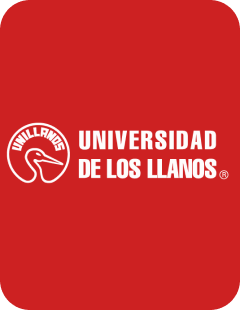Examinando por Autor "HURTADO NERY, V.L."
Mostrando 1 - 4 de 4
Resultados por página
Opciones de ordenación
Publicación Sólo datos Análisis de parámetros de desempeño zootécnico en la fase de cría en una porcícola comercial del departamento del Meta Analysis of animal production parameters of swine breeding phase in commercial farm in the Meta state(Universidad de los Llanos, 2007-09-01) TORRES NOVOA, D. M.; HURTADO NERY, V.L.Titulo en ingles: Analysis of animal production parameters of swine breeding phase in commercial farm in the Meta state.RESUMEN: Con el objetivo de evaluar los parámetros zootécnicos para cerdos en fase de cría, se realizó la presente investigación, basada en los registros históricos tomados en una explotación comercial, ubicada en la vereda las mercedes; municipio de Villavicencio, Departamento del Meta. Se recopilo información del registro computacional PIG CHAMP perteneciente a la granja porcícola San Diego, para estimar los siguientes parámetros: Número de lechones nacidos por camada, peso al nacimiento por lechón, lechones muertos al nacimiento, número de fetos momificados por camada, lechones destetos por camada, lechones muertos en pre-destete, peso al destete por lechón, edad al destete, aparición del celo post-destete, intervalo entre partos, partos por cerda / año y lechones destetos por cerda / año. La información recolectada fue analizada mediante estadística descriptiva, encontrándose los siguientes parámetros: Número de lechones nacidos por camada, 10,02 ± 0,1; peso al nacimiento, 1,48± 0,05± kg; lechones muertos al nacimiento, 0,84± 0,2; fetos momificados por camada, 0,33 ± 0,15; lechones destetos por camada, 8,8± 1,3; lechones muertos en pre-destete, 1,15 ± 0,6; peso al destete; aparición del celo post- destete, 9± 0,12 días; intervalo entre partos, 152± 0,83 días; partos por cerda/ año 2.5± 0,01 y lechones destetos por cerda / año, 19.8± 0,33. En conclusión, los parámetros zootécnicos encontrados son similares a los valores encontrados en otras regiones del país y del mundo.Palabras clave: Camada, destete, lechones.ABSTRACT: With the objective of to evaluation the parameters of animal production for pigs in breeding phase, was carried the present investigation, based on the historical registrations taken in the breeding in the sidewalk the Mercedes; municipality of Villavicencio, Meta. The evaluated characteristics were Weight of piglet to the born, stillbirth, piglets weaned, dead pigs in pre-weaning, weight piglets to wean, age to wean, appearance estrus after weaning, break between parturition, parturition/sow/year and piglets weaning/sow/year. The gathered information was analyzed by means of descriptive statistic, it was verified 10,02 pigs to the birth and 1,48 kg of weight; 0,84 dead pigs to the birth; 0,33 fetuses mummified by litter; 8,8 piglets weaning for litter; 1,3 dead pigs in pre-weaning; appear- ance of the estrus post-weaning 9 days, interval among parturition 152 days; parturitions for sow year 2.5 and pigs weaning sow year 19.8. In conclusion, the parameter of animal production for the breeding phase of swinish, next to the values found in other regions of the country and of the world.Key words: Litter, weaning, piglets.Publicación Sólo datos Análisis de parámetros de desempeño zootécnico en la fase de cría en una porcícola comercial del departamento del Meta Analysis of animal production parameters of swine breeding phase in commercial farm in the Meta state(Universidad de los Llanos, 2007-09-01) TORRES NOVOA, D. M.; HURTADO NERY, V.L.Titulo en ingles: Analysis of animal production parameters of swine breeding phase in commercial farm in the Meta state.RESUMEN: Con el objetivo de evaluar los parámetros zootécnicos para cerdos en fase de cría, se realizó la presente investigación, basada en los registros históricos tomados en una explotación comercial, ubicada en la vereda las mercedes; municipio de Villavicencio, Departamento del Meta. Se recopilo información del registro computacional PIG CHAMP perteneciente a la granja porcícola San Diego, para estimar los siguientes parámetros: Número de lechones nacidos por camada, peso al nacimiento por lechón, lechones muertos al nacimiento, número de fetos momificados por camada, lechones destetos por camada, lechones muertos en pre-destete, peso al destete por lechón, edad al destete, aparición del celo post-destete, intervalo entre partos, partos por cerda / año y lechones destetos por cerda / año. La información recolectada fue analizada mediante estadística descriptiva, encontrándose los siguientes parámetros: Número de lechones nacidos por camada, 10,02 ± 0,1; peso al nacimiento, 1,48± 0,05± kg; lechones muertos al nacimiento, 0,84± 0,2; fetos momificados por camada, 0,33 ± 0,15; lechones destetos por camada, 8,8± 1,3; lechones muertos en pre-destete, 1,15 ± 0,6; peso al destete; aparición del celo post- destete, 9± 0,12 días; intervalo entre partos, 152± 0,83 días; partos por cerda/ año 2.5± 0,01 y lechones destetos por cerda / año, 19.8± 0,33. En conclusión, los parámetros zootécnicos encontrados son similares a los valores encontrados en otras regiones del país y del mundo.Palabras clave: Camada, destete, lechones.ABSTRACT: With the objective of to evaluation the parameters of animal production for pigs in breeding phase, was carried the present investigation, based on the historical registrations taken in the breeding in the sidewalk the Mercedes; municipality of Villavicencio, Meta. The evaluated characteristics were Weight of piglet to the born, stillbirth, piglets weaned, dead pigs in pre-weaning, weight piglets to wean, age to wean, appearance estrus after weaning, break between parturition, parturition/sow/year and piglets weaning/sow/year. The gathered information was analyzed by means of descriptive statistic, it was verified 10,02 pigs to the birth and 1,48 kg of weight; 0,84 dead pigs to the birth; 0,33 fetuses mummified by litter; 8,8 piglets weaning for litter; 1,3 dead pigs in pre-weaning; appear- ance of the estrus post-weaning 9 days, interval among parturition 152 days; parturitions for sow year 2.5 and pigs weaning sow year 19.8. In conclusion, the parameter of animal production for the breeding phase of swinish, next to the values found in other regions of the country and of the world.Key words: Litter, weaning, piglets.Publicación Sólo datos Utilización de materias primas regionales en la alimentación de equinos criollos adultos en el municipio de Villavicencio(Universidad de los Llanos, 2007-01-01) ARRIETA, G.; PEÑA, C; HURTADO NERY, V.L.; IREGUI, A.Titulo en ingles: Use of regional raw materials in the feeding of equine mature creoles in the municipality of Villavicencio.RESUMEN: El presente trabajo fue realizado en Catama, Municipio de Villavicencio. Se utilizaron 9 caballos criollos, adultos, machos, castrados. El ensayo fue dividido en dos fases en las que se evaluaron tres raciones; 1. Ración comercial, como testigo; 2.Ración con 12,4% de pica de arroz y sin aceite crudo de palma africana, ACPA y 3. Ración con 0,86% de ACPA y 20,8% de pica de arroz. Fue empleado un diseño experimental totalmente al azar de tres tratamientos con tres repeticiones. En la primera fase experimental se evalúo ganancia de peso, condición corporal y estado físico. En la segunda fase se determinó la digestibilidad total aparente de las raciones, por el método de colecta total de heces; también se estimó la proteína sérica total pre y postprandial en horas 0, 1, 2, 3 y 4. No se encontraron diferencias significativas (P>0.05) en la ganancia de peso ni en la digestibilidad de las diferentes raciones. Los valores de las proteínas séricas totales fue similar en todos los tratamientos. Se concluye que en equinos adultos de trabajo liviano dietas con 12.4% de pica de arroz y sin ACPA, presentan mejor ganancia de peso y mayor digestibilidad de materia seca y fibra cruda.Palabras clave: Aceite, Arroz, equinos, digestibilidad total.ABSTRACT: The present work was carried out in Catama, which is in the municipality of Villavicencio. Nine adult creoles castrated male horses were used. The feeding trial was divided in two phases during which three different rations were evaluated; 1. a commercially prepared ration was used as a control; 2. a ration with 12.4% of rice fibres by product (pica) without palm oil; 3. a ration with 0,86% of palm oil and 20,8% of rice fibres by product(pica). These rations were used at random in an experimental design of three treatments with three repetitions. In the first experimental phase, the horses were evaluated for weight gain, corporal condition, and physical state. During the second phase, apparent total digestibility was determined by the method of total collection of feces, and also total serum protein was also measured in the three treatments pre and postprandial in hours 0, 1, 2, 3, and 4. No significant differences (P >0.05) where encountered in the weight gains, nor in the digestibility of the different rations. The data of the total serum protein was similar in all the treatments. In conclusion, for equine adults doing light work, the best results were obtained with the ration with 12.4% of rice (pica de) without palm oil resulted in the best weight gain, and greater digestibility of dry matter and raw fiber.Key words: horses, total digestibility, oil, rice.Publicación Sólo datos Utilización de materias primas regionales en la alimentación de equinos criollos adultos en el municipio de Villavicencio(Universidad de los Llanos, 2007-01-01) ARRIETA, G.; PEÑA, C; HURTADO NERY, V.L.; IREGUI, A.Titulo en ingles: Use of regional raw materials in the feeding of equine mature creoles in the municipality of Villavicencio.RESUMEN: El presente trabajo fue realizado en Catama, Municipio de Villavicencio. Se utilizaron 9 caballos criollos, adultos, machos, castrados. El ensayo fue dividido en dos fases en las que se evaluaron tres raciones; 1. Ración comercial, como testigo; 2.Ración con 12,4% de pica de arroz y sin aceite crudo de palma africana, ACPA y 3. Ración con 0,86% de ACPA y 20,8% de pica de arroz. Fue empleado un diseño experimental totalmente al azar de tres tratamientos con tres repeticiones. En la primera fase experimental se evalúo ganancia de peso, condición corporal y estado físico. En la segunda fase se determinó la digestibilidad total aparente de las raciones, por el método de colecta total de heces; también se estimó la proteína sérica total pre y postprandial en horas 0, 1, 2, 3 y 4. No se encontraron diferencias significativas (P>0.05) en la ganancia de peso ni en la digestibilidad de las diferentes raciones. Los valores de las proteínas séricas totales fue similar en todos los tratamientos. Se concluye que en equinos adultos de trabajo liviano dietas con 12.4% de pica de arroz y sin ACPA, presentan mejor ganancia de peso y mayor digestibilidad de materia seca y fibra cruda.Palabras clave: Aceite, Arroz, equinos, digestibilidad total.ABSTRACT: The present work was carried out in Catama, which is in the municipality of Villavicencio. Nine adult creoles castrated male horses were used. The feeding trial was divided in two phases during which three different rations were evaluated; 1. a commercially prepared ration was used as a control; 2. a ration with 12.4% of rice fibres by product (pica) without palm oil; 3. a ration with 0,86% of palm oil and 20,8% of rice fibres by product(pica). These rations were used at random in an experimental design of three treatments with three repetitions. In the first experimental phase, the horses were evaluated for weight gain, corporal condition, and physical state. During the second phase, apparent total digestibility was determined by the method of total collection of feces, and also total serum protein was also measured in the three treatments pre and postprandial in hours 0, 1, 2, 3, and 4. No significant differences (P >0.05) where encountered in the weight gains, nor in the digestibility of the different rations. The data of the total serum protein was similar in all the treatments. In conclusion, for equine adults doing light work, the best results were obtained with the ration with 12.4% of rice (pica de) without palm oil resulted in the best weight gain, and greater digestibility of dry matter and raw fiber.Key words: horses, total digestibility, oil, rice.


